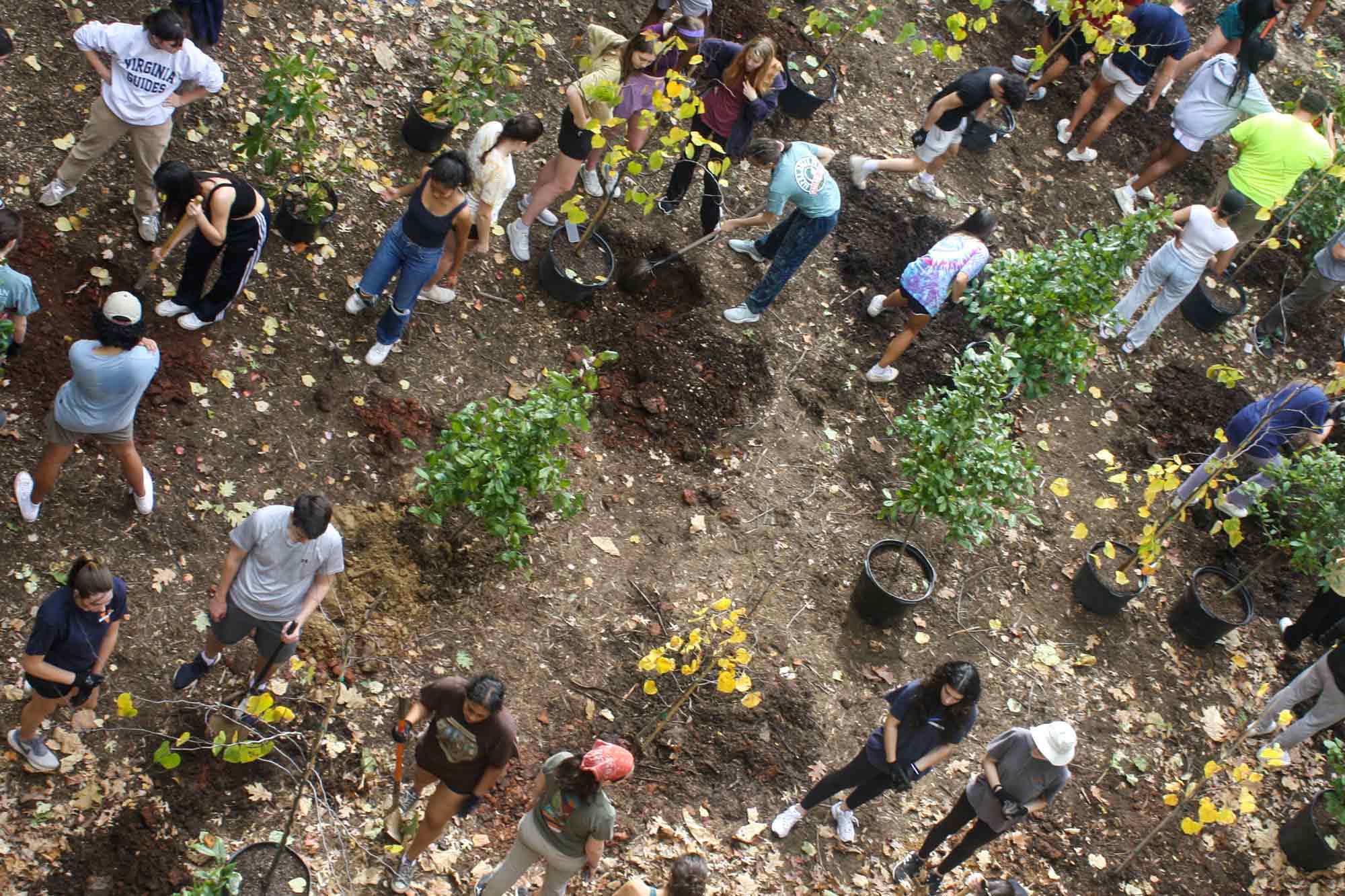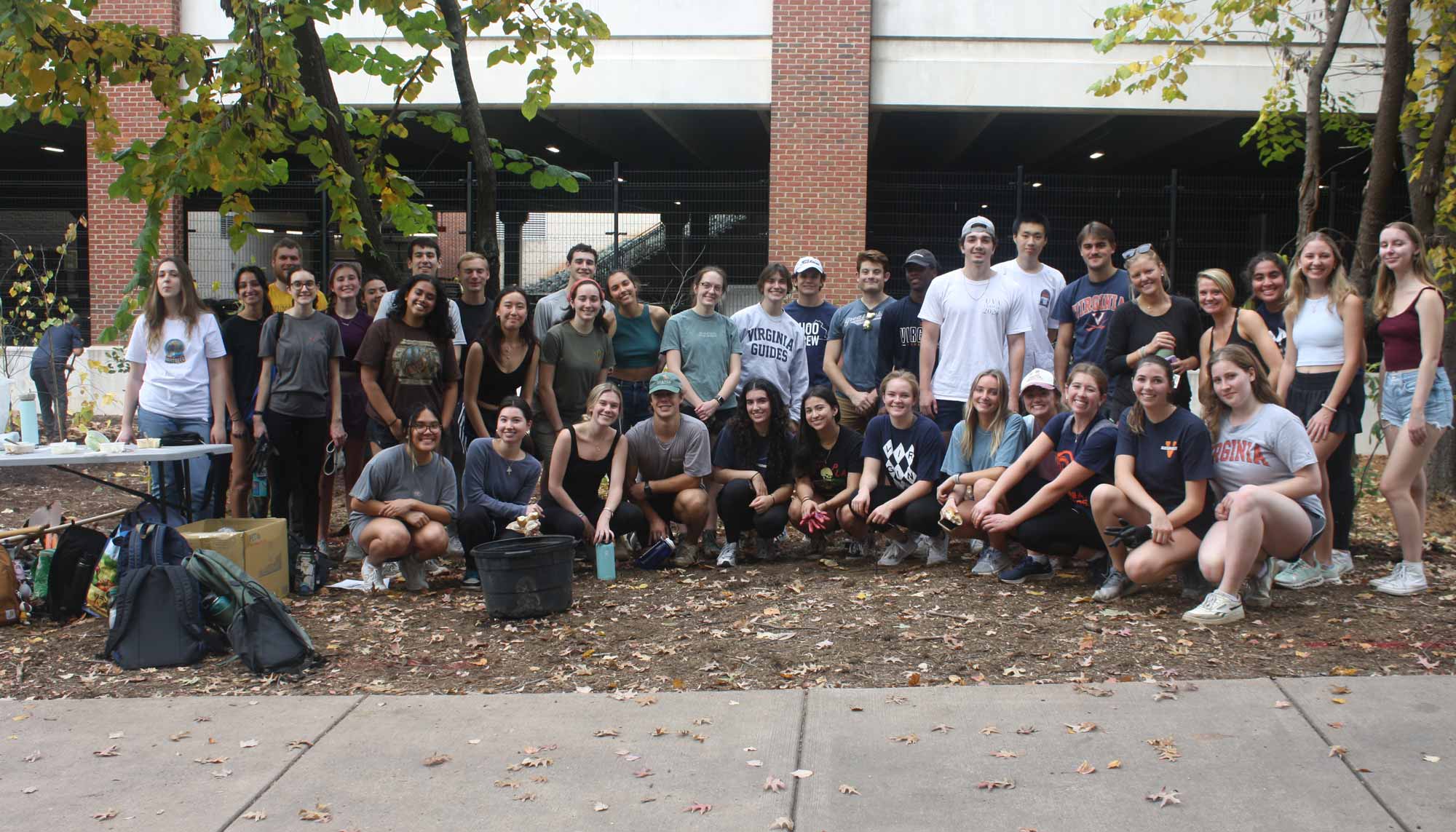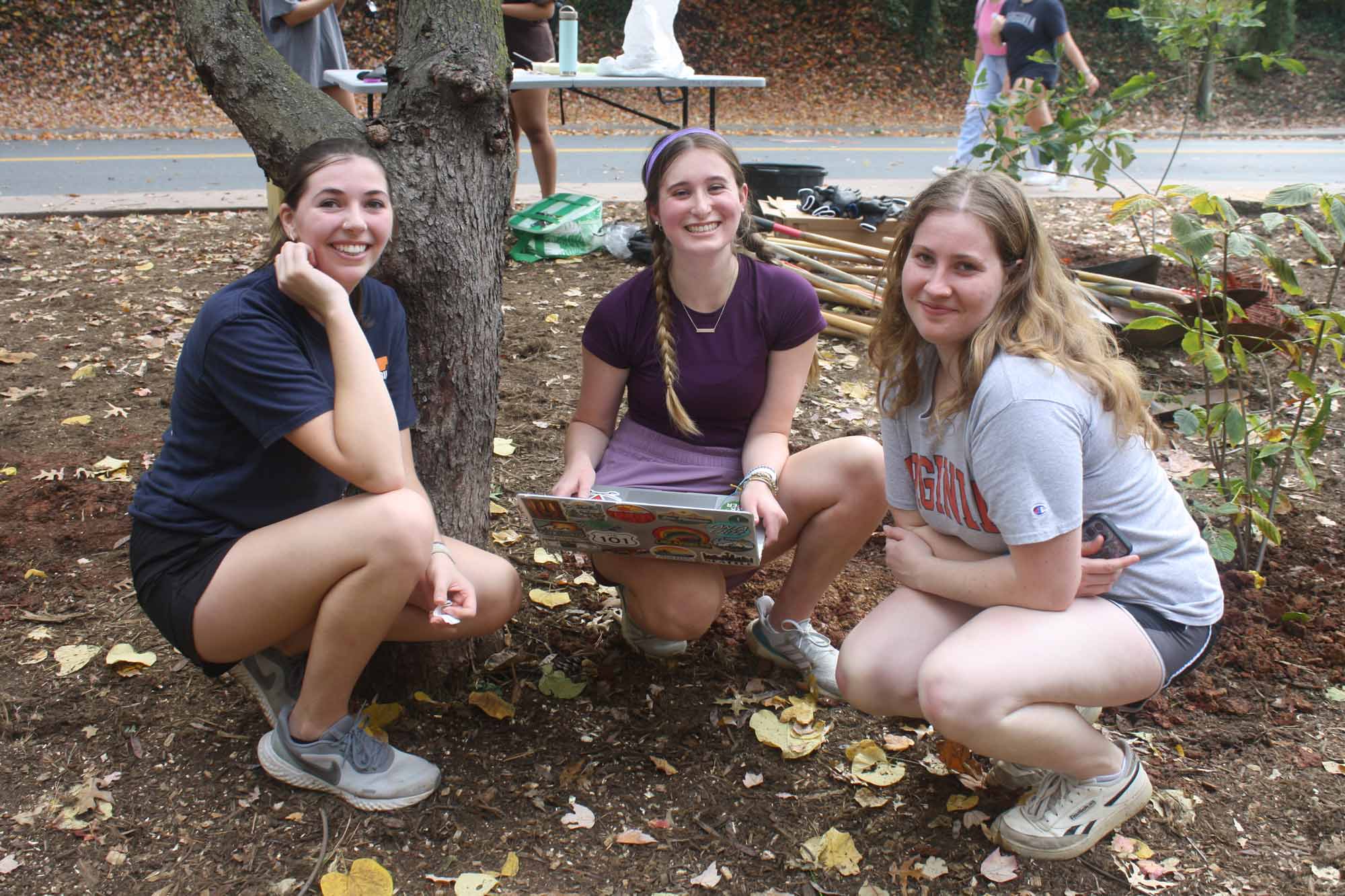Finding the proper place to put 80 plants was not easy. With help from Charity Nyelele, assistant professor of environmental sciences, the students researched and created a list of native plants, including herbs, shrubs and trees, that would do well. They compared that list to the varieties readily available in the UVA nursery.
“It is important to use native plants because it fosters native habitat, which enhances biodiversity. Native plants are better adapted to the local climate, making them more likely to survive, and they require less resources than non-native species,” Vargo said. “Ultimately, planting native species is a more environmentally friendly and sustainable option, as compared to non-native species.”
They then sought spots that were empty or minimally planted, areas not currently used or walked through by pedestrians. Working with Senior Landscape Architect Helen Wilson and Associate Director of Grounds Richard Hopkins, they narrowed their choices down to five sites.
“We think the most difficult part of this project was getting past roadblocks of where to plant the patches and how to obtain the trees,” Germain said, noting that some of their proposed sites were home for future University renovations and other projects. “We had to nix some of the areas we chose and only move forward with the ones that had nothing planned for them yet.”
Then they chose the plants according to the places they were expected to grow, maximum heights and the locations of bus stops, sidewalks, shade and buildings.
“Obtaining the trees was also difficult,” Germain said. “We ended up having to use trees and shrubs that were already in UVA’s nursery, but they all happened to be native plants that were included in our species list.”
Next came planting day.







